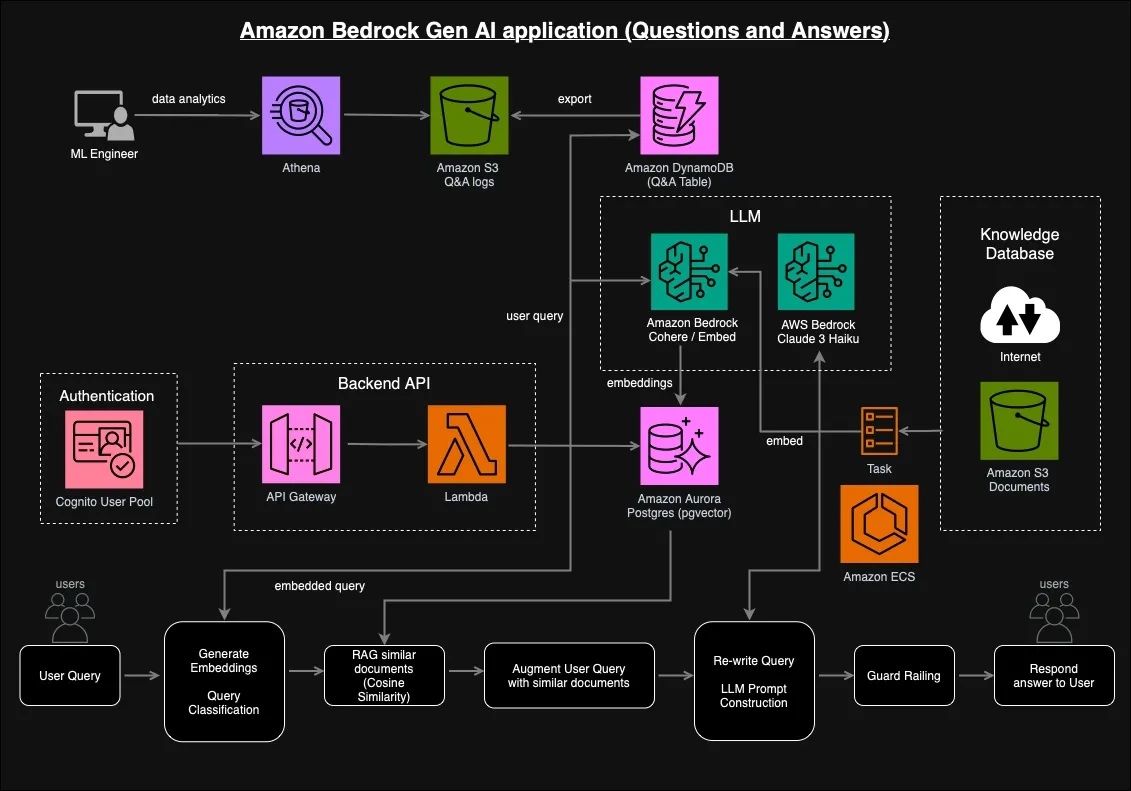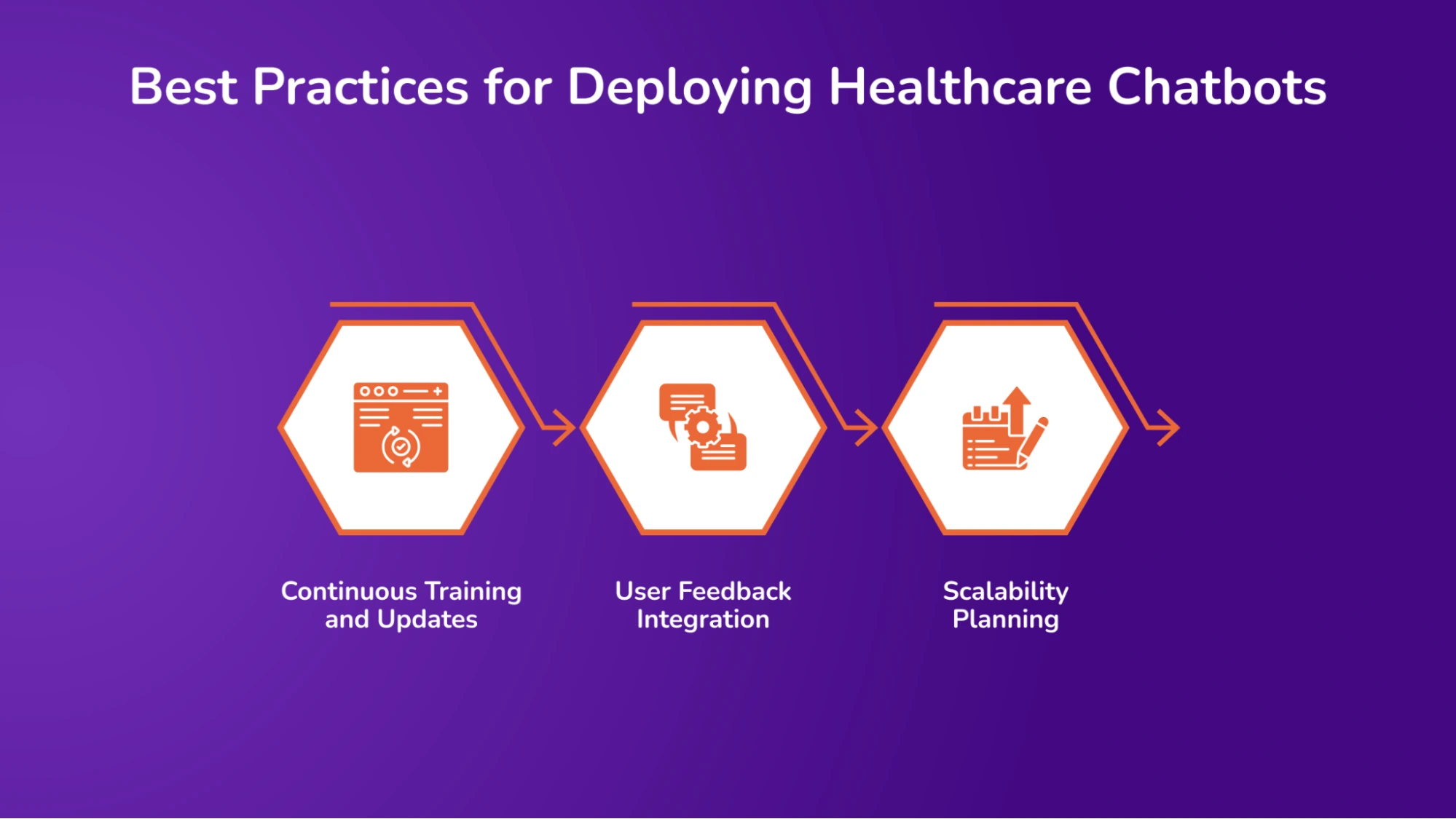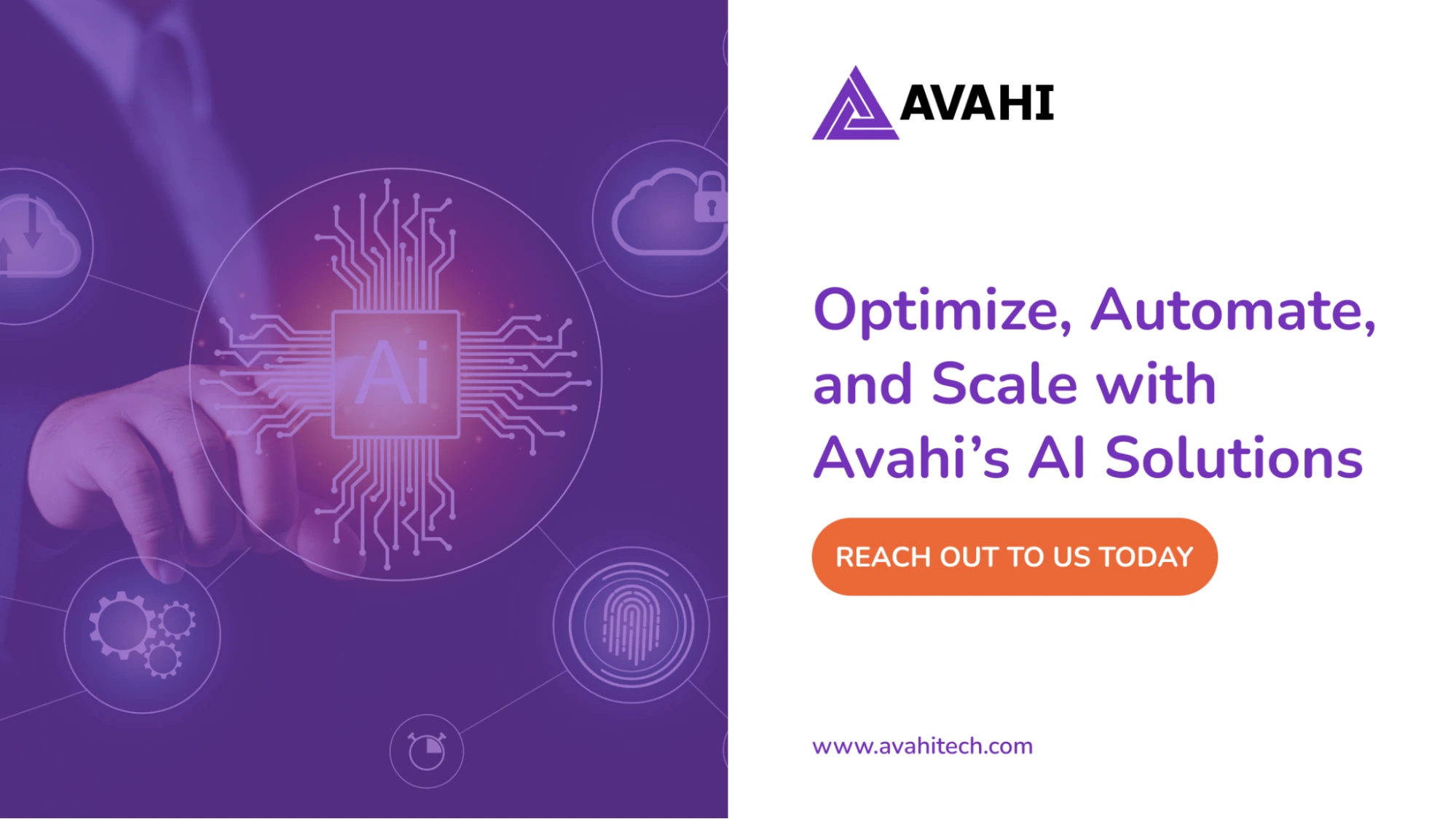A busy hospital receives thousands of patient inquiries and daily questions about appointments, insurance claims, medication refills, and symptoms. Front-desk staff and call centers struggle to keep up, leading to long wait times, frustrated patients, and overworked employees. Meanwhile, a health insurance company faces similar challenges, with policyholders frequently contacting for claim status updates and coverage details.
AI-powered chatbots automate these interactions, providing instant, accurate responses while allowing human staff to focus on more complex tasks. They can handle routine inquiries, assist with patient triage, process insurance claims, and even provide personalized health recommendations without human intervention. This leads to faster service, reduced operational costs, and improved patient satisfaction.
Amazon Bedrock makes it easy for healthcare providers, insurers, and telemedicine platforms to build and deploy secure, scalable AI chatbots. Businesses can use AI models without managing infrastructure to enhance patient engagement, optimize workflows, and comply with healthcare regulations like HIPAA and GDPR.
In this blog, we’ll explore how healthcare organizations can use Amazon Bedrock to develop AI-driven chatbots that are efficient, secure, and ready to handle real-world demands.
What is Amazon Bedrock?
Amazon Bedrock is a fully managed service that provides access to foundation models from leading AI providers through a single API. It enables organizations to build and deploy generative AI applications without managing the underlying infrastructure. This simplifies AI adoption, allowing businesses to integrate advanced AI capabilities quickly and efficiently.
Features of Amazon Bedrock
1. Access to Multiple Foundation Models
Amazon Bedrock allows users to choose from various foundation models developed by different AI providers. This flexibility helps organizations select the best model for their specific use case, whether for natural language processing, image generation, or predictive analytics. Users can experiment with different models and switch as needed without worrying about compatibility issues.
2. Scalability
Amazon Bedrock operates on a serverless architecture, automatically adjusting computing resources based on demand. This ensures that AI applications can handle varying workloads efficiently without requiring manual intervention. Whether processing a few requests or scaling to thousands of users, the system dynamically allocates resources to maintain performance.
3. Security and Compliance
Security and compliance are integral to Amazon Bedrock, making it suitable for industries handling sensitive data, such as healthcare and finance. All data processed by Bedrock is encrypted, both in transit and at rest, using advanced encryption standards.
This protects against unauthorized access. Amazon Bedrock integrates with AWS Identity and Access Management (IAM), allowing organizations to define strict access permissions and ensure only authorized personnel can interact with the AI models.
Building Scalable Healthcare Chatbots With Amazon Bedrock

Source: Amazon AWS
To develop a scalable healthcare chatbot, it is essential to integrate Amazon Bedrock with AWS services that handle data storage, database management, deployment, and load balancing. These services ensure that the chatbot remains efficient, secure, and capable of handling high user demand.
Integrating Amazon Bedrock with AWS Services
1. Data Storage with Amazon S3
Amazon S3 (Simple Storage Service) provides a secure and scalable solution for storing large healthcare-related datasets, including patient records, chatbot interaction logs, and medical documents and reports. S3 allows healthcare organizations to store and retrieve data efficiently while maintaining strict security controls, including encryption and access permissions.
2. Database Management with Amazon DynamoDB
Amazon DynamoDB is a fully managed NoSQL database service that enables real-time data retrieval. It is used in chatbot applications to store patient interactions so the chatbot can provide context-aware responses and ensure low-latency retrieval of patient information and chatbot responses. Integrating DynamoDB allows healthcare chatbots to deliver faster, more personalized interactions without performance bottlenecks.
3. Serverless Deployment with AWS Fargate
AWS Fargate is a serverless computing engine for containerized applications. It allows healthcare chatbots to run without requiring manual infrastructure management. This ensures the chatbot application gets the necessary computing power based on demand and eliminates the need to maintain servers, reducing operational overhead.
It allocates computing resources only when needed, preventing unnecessary costs. AWS Fargate enables healthcare chatbots to operate reliably without downtime, even during peak usage.
4. Load Balancing with Application Load Balancer
An Application Load Balancer (ALB) distributes incoming traffic across multiple chatbot instances to ensure consistent performance. Efficient distribution of requests helps handle high user traffic and prevents server overload.
It redirects traffic to healthy instances if one fails and balances workloads efficiently to maintain fast and smooth interactions. With load balancing, healthcare chatbots can manage large volumes of concurrent users without performance issues, ensuring a seamless experience for patients and healthcare providers.
5. Encryption with AWS Key Management Service (KMS)
Encryption ensures that sensitive healthcare data remains secure during storage and transmission. AWS Key Management Service (KMS) protects stored data, including patient records and chatbot interactions, and secures information transmitted between the chatbot and users.
It handles encryption keys securely, reducing human intervention and potential security risks.
By encrypting data, healthcare organizations can prevent unauthorized access and maintain confidentiality.
6. Access Controls with AWS Identity and Access Management (IAM)
IAM allows organizations to define strict access policies, ensuring only authorized users and systems can interact with the chatbot and its data. Key security features include:
- Role-based access control (RBAC): Restricts permissions based on user roles (e.g., doctors, nurses, IT administrators).
- Multi-factor authentication (MFA): Adds an extra layer of security by requiring multiple authentication factors.
- Fine-grained permissions: Limits access to specific data and services, preventing unnecessary exposure.
Proper access control ensures that patient information remains protected and accessible only to those with legitimate authorization.
7. Regular Auditing and Monitoring
Continuous monitoring helps detect security threats and maintain compliance. AWS provides two key services for this:
- AWS CloudTrail: Logs all API activity, helping track access and modifications to chatbot data.
- Amazon CloudWatch: Monitors chatbot performance and security events, sending alerts for unusual activity.
By combining Amazon Bedrock with these AWS services, healthcare organizations can build chatbots that are scalable, secure, and capable of effectively handling real-world healthcare demands.
Enhancing Privacy in Chatbot Interactions
Healthcare chatbots handle sensitive patient data, making privacy protection a top priority. Organizations can implement data de-identification and personally identifiable information (PII) detection techniques to safeguard patient information. These measures ensure that patient interactions remain private and compliant with data protection regulations.
Data De-identification Techniques
Data de-identification removes or masks personal details from patient records before processing. This prevents the chatbot from accessing identifiable information while still allowing it to provide useful responses. Essential de-identification methods include:
- Tokenization: Replacing sensitive data (e.g., patient names) with unique codes so that personal details are never exposed to the chatbot.
- Data Masking: Partially obscuring information such as social security numbers (e.g., displaying only the last four digits).
- Generalization: Broadening data categories (e.g., converting exact ages into age ranges) makes it harder to link information back to individuals.
PII Detection and Removal
Personally identifiable information (PII) includes data that can be used to identify an individual, such as names, addresses, phone numbers, and medical record IDs. To minimize privacy risks, chatbots must be able to detect and remove PII from conversations. Amazon Bedrock, along with AWS services, enables automated PII detection and removal through:
- Amazon Comprehend Medical: Identifies and redacts sensitive health data from chatbot conversations.
- Custom Rules and Filters: Organizations can define specific words or patterns to be automatically flagged and removed.
- Real-time Scrubbing: Before storing or processing chatbot interactions, PII is detected and replaced with placeholders (e.g., “[NAME REMOVED]”).
Implementing PII detection ensures that chatbots handle only necessary information, reducing the risk of unauthorized data exposure.
Best Practices for Deploying Healthcare Chatbots

Organizations must focus on continuous improvements, user-driven enhancements, and scalability planning to ensure a healthcare chatbot remains accurate, efficient, and user-friendly. Below are some of the essential best practices to follow during deployment.
1. Continuous Training and Updates
Healthcare knowledge constantly evolves, and a chatbot must stay up-to-date with the latest medical guidelines, treatments, and best practices. Ensure the chatbot’s database includes the latest clinical guidelines, drug interactions, and medical research.
The chatbot should be regularly trained on new patient interactions and medical terminology to improve its understanding. Machine learning workflows that automatically update the chatbot’s knowledge base without manual intervention can also be used.
2. User Feedback Integration
A chatbot’s effectiveness depends on its ability to meet user needs. Collecting and analyzing patient feedback helps refine chatbot responses and functionality. After interactions, prompt users to rate responses or provide suggestions.
Identify recurring issues, such as incorrect responses or misunderstood queries, and adjust the chatbot accordingly. Compare chatbot responses and interaction flows to determine which version provides the best user experience.
3. Scalability Planning
As chatbot usage grows, it must be able to handle an increasing number of interactions without delays or performance issues. The chatbot should be deployed on scalable platforms like AWS Fargate or Kubernetes to allocate resources based on demand automatically.
Distribute incoming chatbot requests across multiple instances to prevent overloading and maintain response speed. Use databases like Amazon DynamoDB for real-time data retrieval, ensuring quick and smooth interactions.
Factors to Consider for Successfully Deploying a Healthcare Chatbot
Below are the essential factors to consider when launching a chatbot for real-world healthcare applications.
1. Security
Since healthcare chatbots handle sensitive patient data, security must be a top priority. AWS provides various tools to protect data, control access, and prevent unauthorized usage.
Use AWS Identity and Access Management (IAM) roles to grant only the necessary permissions to each service. For example, Lambda should only access DynamoDB and API Gateway without unnecessary permissions to access other AWS resources. Encrypt all stored and transmitted data using the AWS Key Management Service (KMS). DynamoDB tables and Amazon S3 buckets should also be encrypted to protect sensitive healthcare information.
Rotate API keys, database credentials, and access tokens regularly to reduce security risks. AWS Secrets Manager automates this process, ensuring that credentials are always up to date and securely stored. These security measures help maintain compliance with healthcare regulations while protecting patient data from unauthorized access.
2. Cost Optimization
AWS has a pay-as-you-go pricing model, which means costs can increase quickly if services aren’t optimized. To identify inefficiencies or unnecessary expenditures, regularly track the costs associated with API Gateway, Lambda, and DynamoDB.
Since AWS Lambda charges based on execution time, optimizing function runtimes using smaller memory configurations or reducing unnecessary processing steps can significantly lower costs. To reduce API Gateway expenses, minimize the number of API calls and use caching where possible.
3. Scalability
A healthcare chatbot must handle unpredictable traffic loads, especially during peak hours when more patients may seek assistance. AWS services are designed to scale automatically, but proactive configuration is necessary to prevent downtime or performance issues.
Setting up Auto Scaling policies ensures the database can dynamically adjust its read and write capacity, maintaining performance even when demand fluctuates. AWS Lambda can process multiple chatbot requests in parallel, but monitoring and adjusting concurrency limits is essential to prevent bottlenecks. Configure API Gateway throttling limits to avoid excessive requests from overwhelming backend services, ensuring smooth user interactions.
Optimize, Automate, and Scale with Avahi’s AI Solutions
At Avahi, we empower businesses to deploy advanced Generative AI that streamlines operations, enhances decision-making, and accelerates innovation—all with zero complexity.
As your trusted AWS Cloud Consulting Partner, we empower organizations to harness AI’s full potential while ensuring security, scalability, and compliance with industry-leading cloud solutions.
Our AI Solutions Include
- AI Adoption & Integration – Leverage Amazon Bedrock and GenAI to enhance automation and decision-making.
- Custom AI Development – Build intelligent applications tailored to your business needs.
- AI Model Optimization – Seamlessly switch between AI models with automated cost, accuracy, and performance comparisons.
- AI Automation – Automate repetitive tasks and free up time for strategic growth.
- Advanced Security & AI Governance – Ensure compliance, fraud detection, and secure model deployment.
Want to unlock the power of AI with enterprise-grade security and efficiency?
Start Your AI Transformation with Avahi Today!




